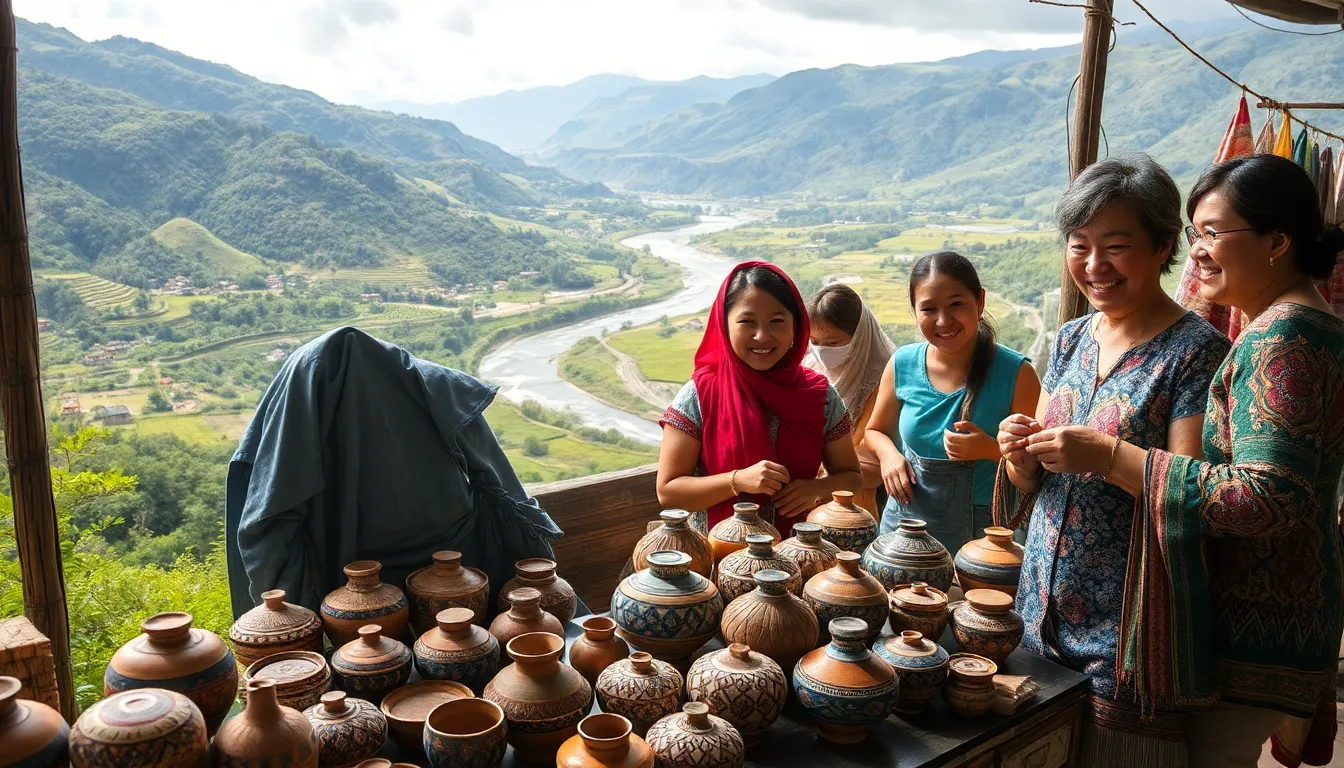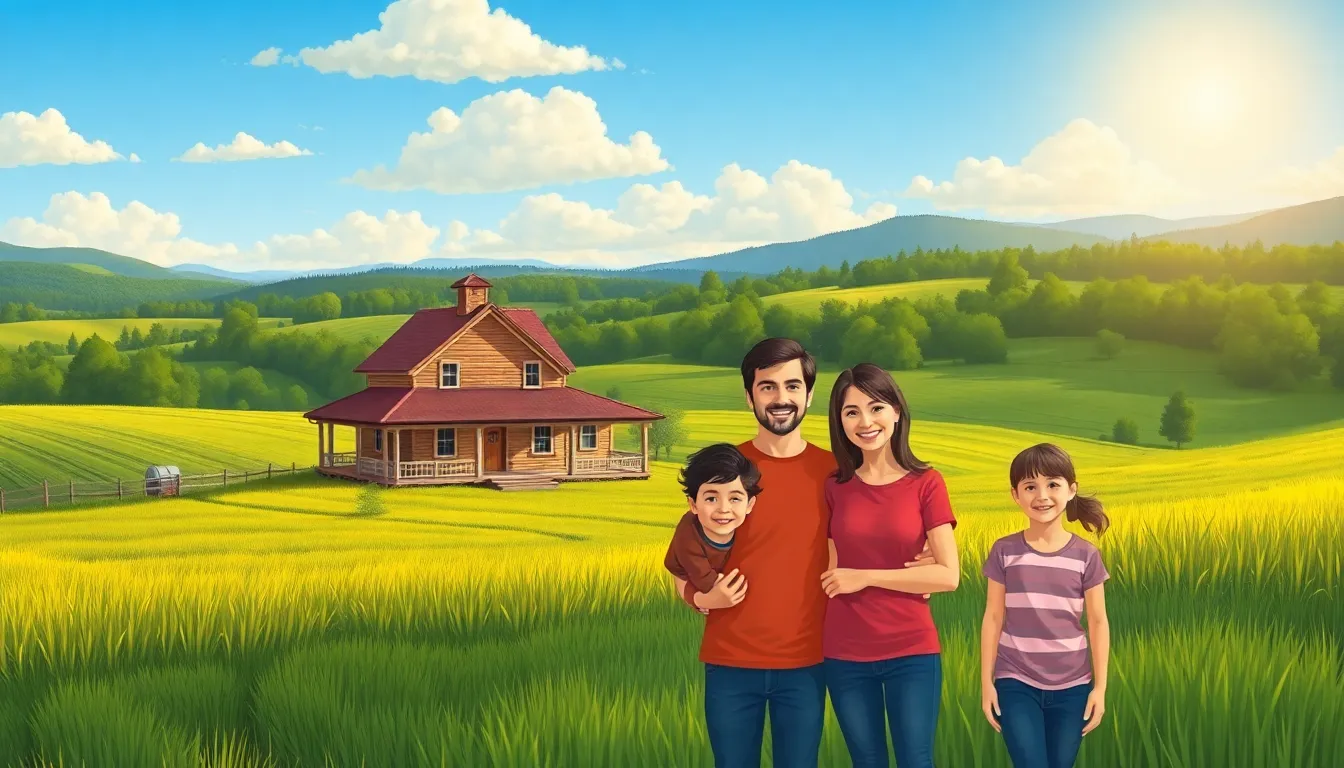In a world where concrete jungles dominate the skyline, rural residential living offers a refreshing escape. Imagine waking up to the sound of chirping birds instead of honking horns and sipping coffee on a porch surrounded by nature’s beauty. It’s not just a lifestyle; it’s a delightful blend of tranquility and community that urban dwellers often dream about.
Rural residential areas are like hidden gems, where neighbors greet each other with a friendly wave and kids can roam free without a care in the world. Whether it’s the charm of a cozy farmhouse or the allure of vast open spaces, rural living invites everyone to slow down and savor life’s simple pleasures. So why not trade the hustle and bustle for a slice of serenity? Embrace the charm of rural residential living and discover a life that’s not just lived but truly enjoyed.
Table of Contents
ToggleOverview of Rural Residential Areas
Rural residential areas offer a tranquil lifestyle distinct from urban environments. These regions attract individuals seeking connection with nature and community.
Definition of Rural Residential
Rural residential refers to areas primarily designated for housing outside urban centers. Such settings typically include single-family homes, farms, and small communities. These regions provide larger land parcels and often feature agricultural activities. Residents enjoy a lower population density, which fosters a peaceful environment. This lifestyle emphasizes a closer relationship with nature and the land.
Characteristics of Rural Residential Living
Rural residential living encompasses various defining traits. First, the community typically thrives on a strong sense of neighborliness. Individuals often participate in local events and support one another. Second, spacious properties allow for gardening, livestock, and outdoor activities. Residents find ample opportunities for recreation, such as hiking and fishing. Third, essential amenities may be limited, creating a reliance on nearby towns for services. Nature plays a significant role, with scenic landscapes enhancing daily life. Lastly, the slower pace encourages relaxation and reflection, contributing to overall well-being.
Benefits of Rural Residential Living

Rural residential living offers numerous advantages that enhance quality of life. Residents enjoy a unique blend of tranquility and community dynamics that significantly contrasts urban experiences.
Peaceful Environment
A serene atmosphere characterizes rural areas. Natural landscapes surround homes, creating a calming backdrop. Reduced noise pollution contributes to a more relaxed lifestyle, allowing for peaceful outdoor activities. Fresh air fills the surroundings, promoting overall well-being. Wildlife sightings and starry nights enrich everyday experiences, adding to the charm of rural living. Lower population density often means less traffic, leading to shorter travel times for essential services. All these factors combine to foster mental clarity and relaxation.
Community Engagement
Strong social bonds define rural communities. Neighbors often know each other by name, fostering a sense of belonging. Local events, such as fairs and festivals, encourage participation and connection. Volunteer opportunities abound, enabling residents to contribute to shared values and goals. Working together for community improvements strengthens relationships among residents. Supporting local businesses creates a thriving local economy, benefiting everyone involved. Engaging in community activities often leads to lasting friendships and a deeper connection to the land.
Challenges of Rural Residential Life
Rural residential living presents unique challenges that can impact daily life significantly. While the allure of serene surroundings is appealing, these challenges must be acknowledged.
Limited Access to Services
Limited access to essential services poses a major challenge in rural areas. Healthcare facilities often exist at a distance, making it difficult for residents to receive timely medical care. Basic needs such as groceries and banking services may require traveling long distances, particularly for those without personal transportation. Educational institutions frequently face resource constraints, resulting in fewer extracurricular options and larger class sizes. Residents may struggle to find diverse employment opportunities, limiting career advancement and local economic growth. Such barriers can affect overall quality of life, encouraging some individuals to explore options beyond rural living.
Transportation Issues
Transportation issues create additional complexities for rural residents. Public transportation services are typically sparse or non-existent, forcing individuals to rely on personal vehicles for mobility. Long distances to work, schools, and essential services add stress, particularly during harsh weather conditions. Maintenance costs for vehicles can accumulate, leading to financial strain for families. Limited transportation options also restrict social interactions, reducing opportunities for community engagement. Inadequate road infrastructure can exacerbate travel difficulties, impacting both daily commutes and access to emergency services.
Sustainable Development in Rural Residential Areas
Sustainable development in rural residential areas emphasizes harmony with nature while promoting community welfare. It integrates eco-friendly practices and local involvement to enhance living conditions.
Eco-friendly Practices
Adopting eco-friendly practices plays a vital role in rural sustainability. Many households utilize renewable energy sources, such as solar panels, to reduce carbon footprints. Rainwater harvesting systems capture and store water, promoting efficient use of natural resources. Organic farming methods limit chemical usage, fostering healthier ecosystems. Local businesses often engage in sustainable practices, supporting farmers’ markets that showcase regionally sourced products. Communities frequently encourage green building initiatives, with homes designed for energy efficiency, further enhancing environmental conservation.
Local Community Involvement
Community involvement significantly bolsters sustainable development in rural areas. Residents actively participate in local decision-making processes, ensuring their voices influence development plans. Many volunteer for environmental initiatives, such as tree planting and cleanup drives, strengthening local ecosystems. Residents also support local businesses, contributing to economic growth and sustainability. Engaging in community events fosters social connections, promoting a sense of belonging. Through collaboration, residents build resilience and foster long-term viability, ensuring these areas thrive for generations to come.
Rural residential living offers a unique blend of tranquility and community that many find irresistible. The charm of natural surroundings combined with strong social ties creates an enriching environment. While challenges exist such as limited access to services and transportation issues, the rewards often outweigh the difficulties. Embracing a rural lifestyle can lead to a deeper connection with nature and a more fulfilling way of life. As communities focus on sustainable practices and local engagement, the future of rural living looks promising. Those seeking peace and a sense of belonging might just find their ideal home in the heart of the countryside.





